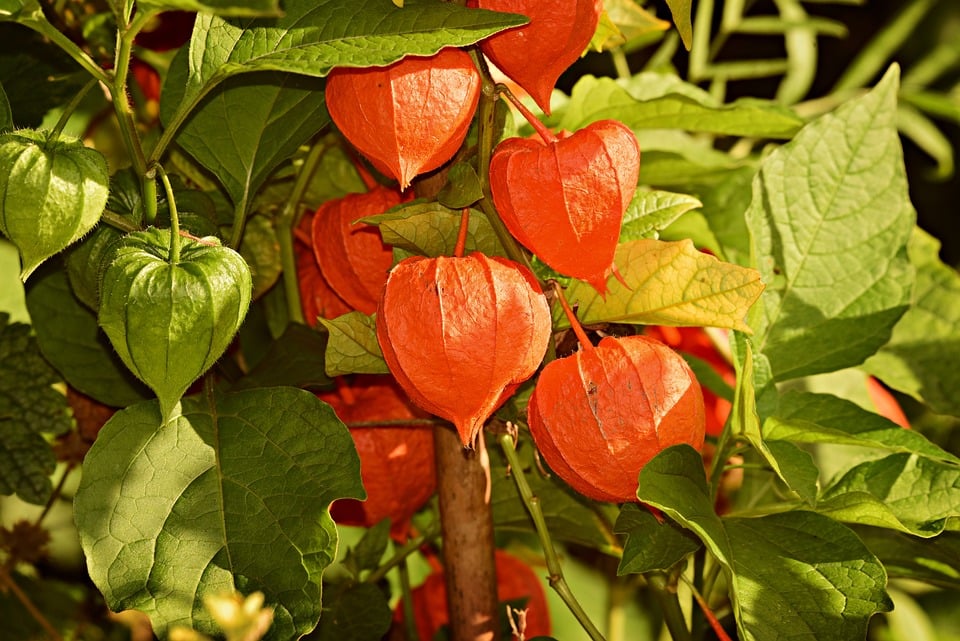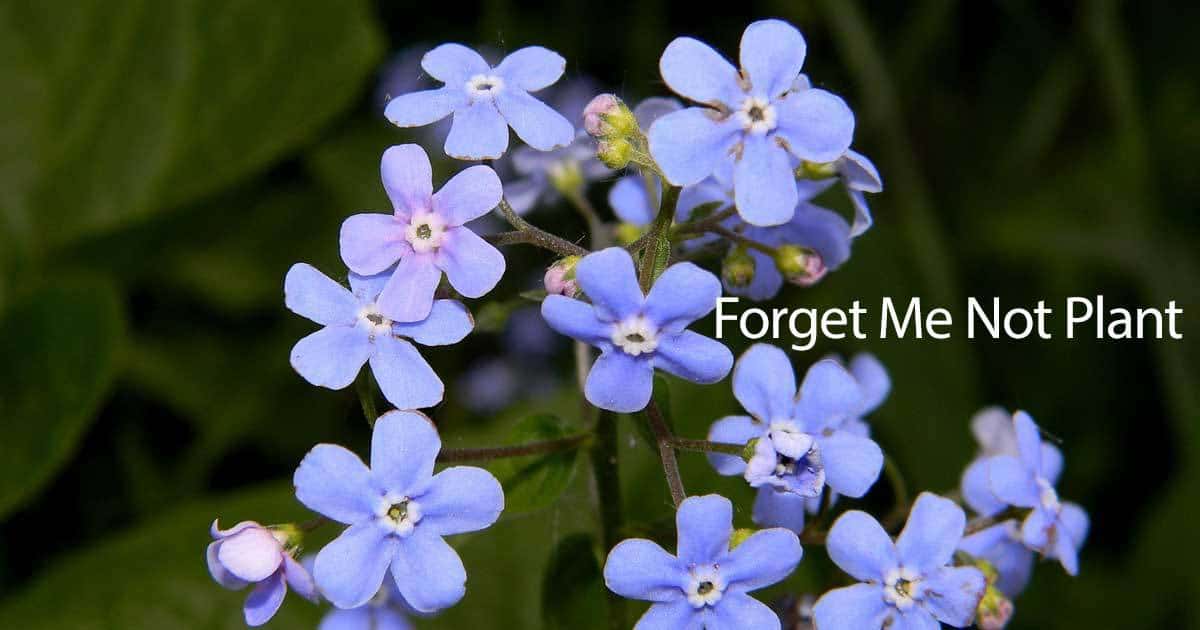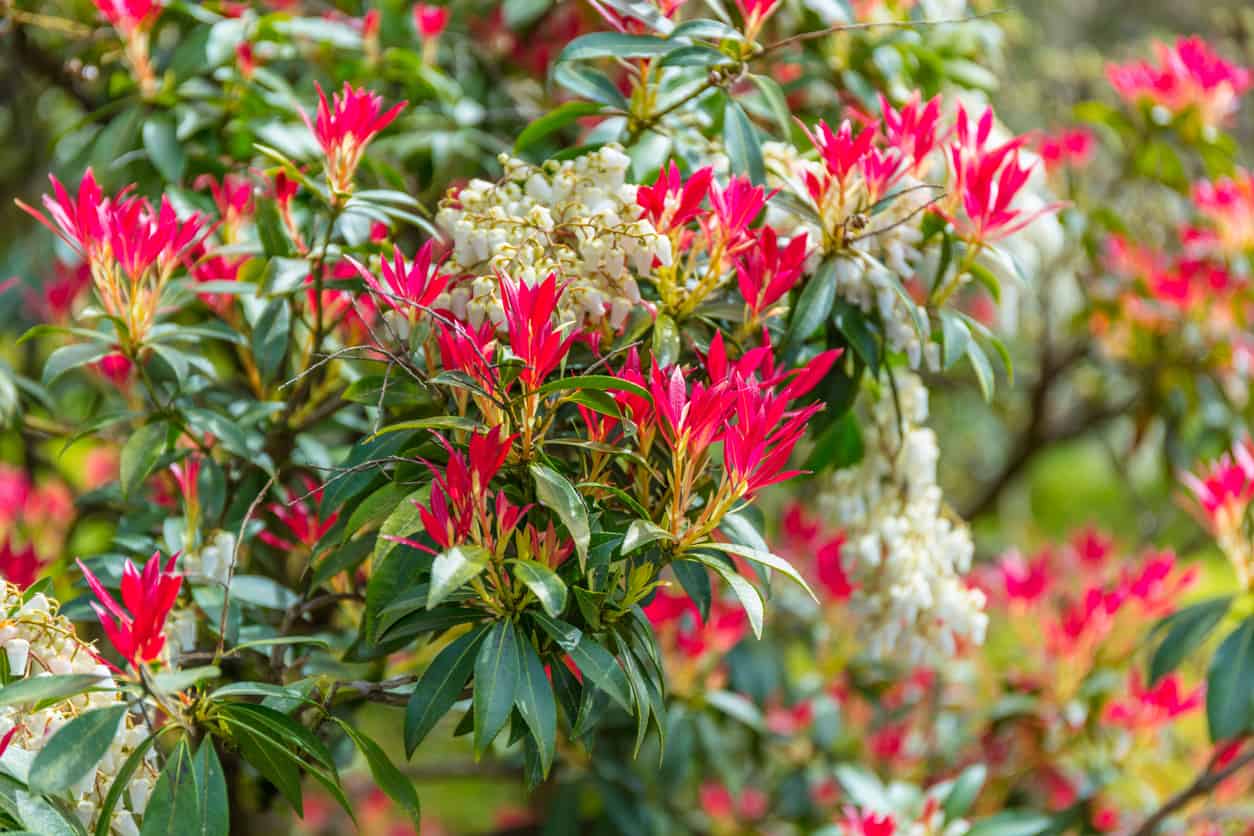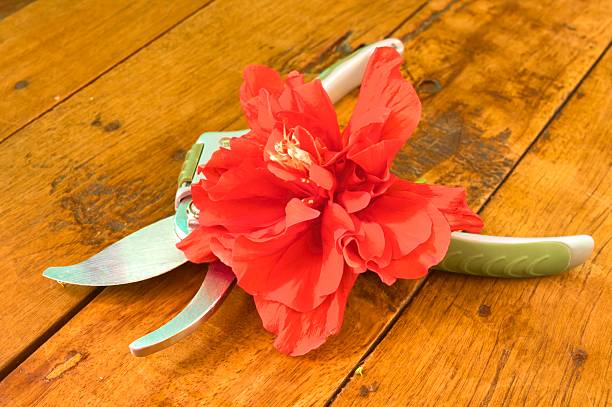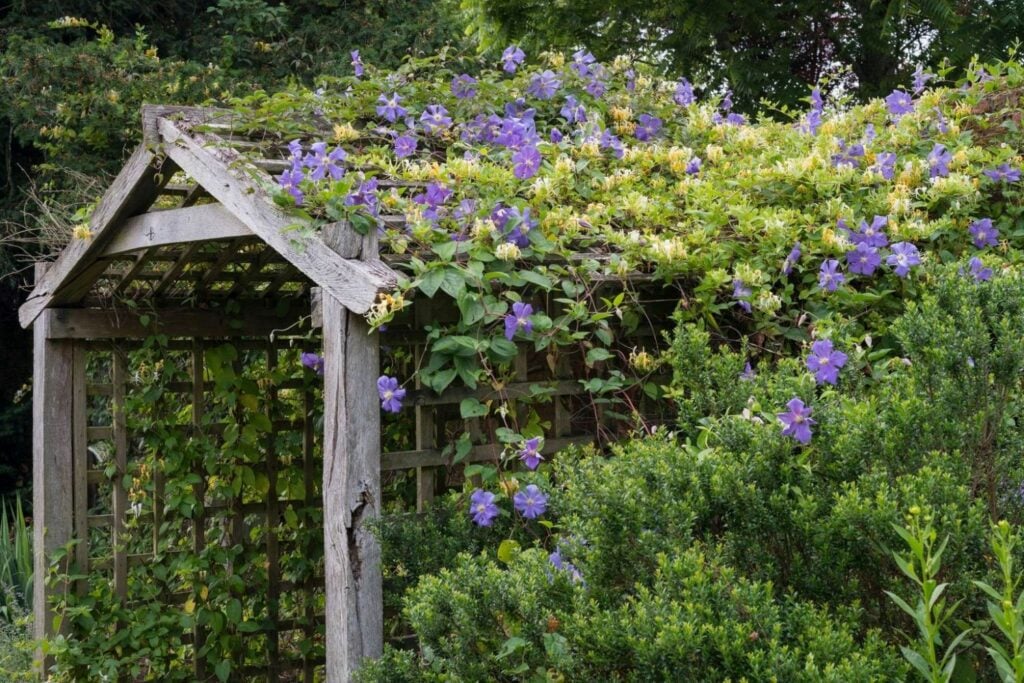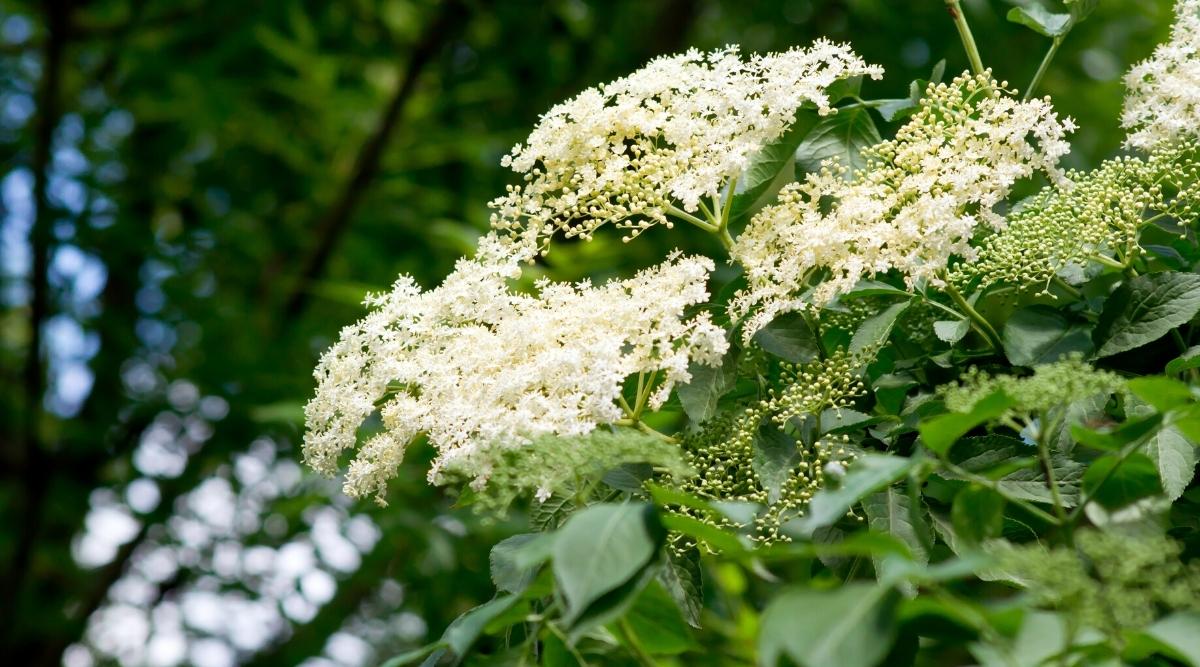15 Purple & Black Hellebore Varieties Worth Growing
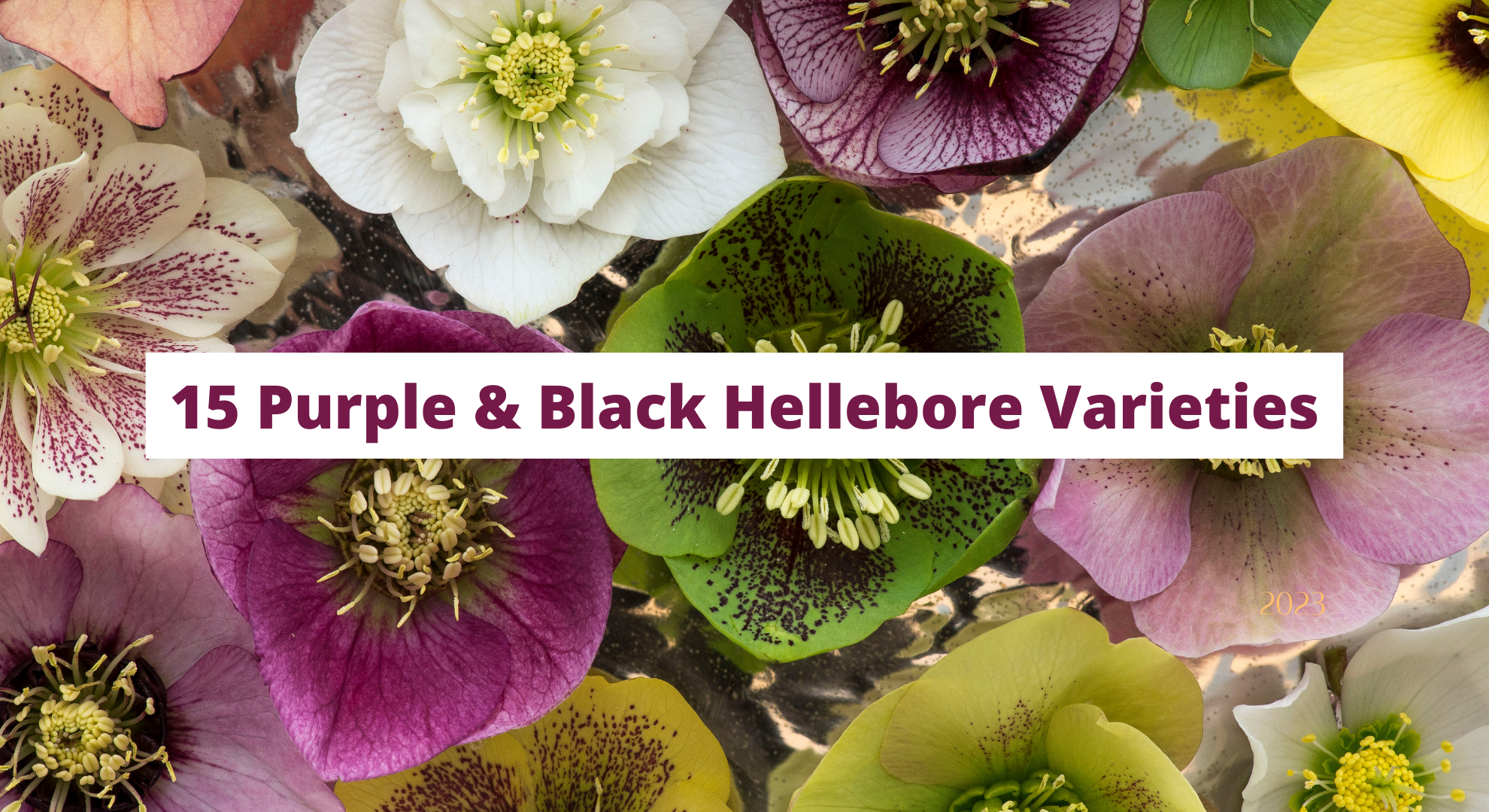
Table of Contents
What’s more beautiful than hellebore flowers? If there were many colour options to choose from, you’d be delighted! We introduce the finest quality black and purple hellebore varieties that can be found in the UK and in many other countries all over the world. You will find a mystical touch in your garden with the ‘Black Beauty’ and the ‘Mystic Violets’ hellebore varieties. Take the chance to discover the unknown and discover its wonders.
Hellebores are a popular ornamental plant that has been used for centuries in gardens. These perennial plants are well-known for their lovely bell-shaped flowers that bloom in early spring. Hellebores are buttercup relatives native to Europe, Asia, and Africa. Hellebores are available in many different varieties and colours. Many gardeners prize black hellebores because they are so rare.
While hellebores are most commonly grown for their ornamental value, some varieties also have medicinal properties. Gout, joint pain, and digestive problems have all been treated with hellebore root extract.
1. Helleborus Atrorubens Subsp. Croaticus

| Common Name | Croatian hellebore |
|---|---|
| Scientific Name | Helleborus atrorubens subsp. croaticus |
| Plant Family | Ranunculaceae |
| Plant Type | Herbaceous perennial |
| Mature Size | Up to 18 inches (45 cm) tall and wide |
| Growth Rate | Slow |
| Soil | Moist, well-drained soil |
| Foliage | Deciduous |
| Uses | Shade gardens, woodland gardens, borders, and containers |
Helleborus atrorubens subsp. croaticus is a subspecies of the Helleborus atrorubens plant, which is also known as the dark hellebore or stinking hellebore. It is a hardy perennial plant that is native to Croatia and neighbouring regions in the Balkans. It has striking dark purple flowers that bloom in late winter or early spring and prefers well-drained soil in partial to full shade. This plant is often grown as an ornamental in woodland gardens, borders, and containers. However, it is toxic if ingested and should be planted in a location that is not easily accessible to children and pets.
2. Helleborus X Hybridus ‘Black Swan’
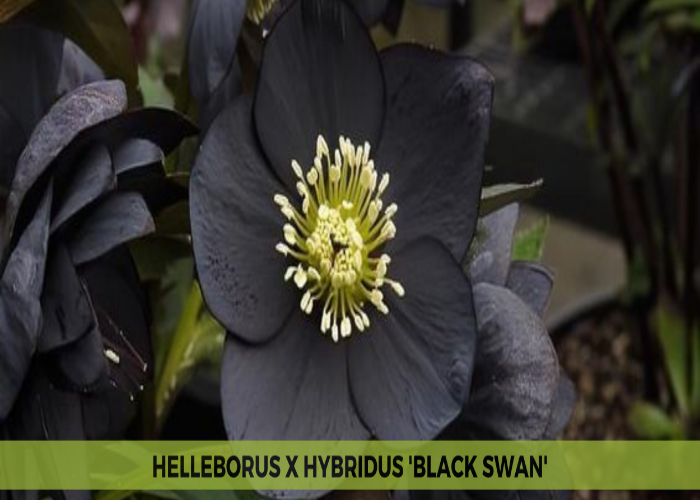
| Common Name | Black Swan Lenten Rose |
| Botanical Name | Helleborus x hybridus ‘Black Swan’ |
| Flowering Season | Late winter to early spring |
| Mature Size | 18-24 inches (45-60 cm) tall and wide |
| Sun Exposure | Partial to full shade |
| Soil Type | Well-drained soil with organic matter |
| Special Features | Deer resistant, attractive to pollinators, long-lasting flowers, evergreen foliage |
| USDA Hardiness Zones | 5-8 |
Helleborus x hybridus ‘Black Swan’ is a stunning and unique variety of hellebore that produces dark, almost black flowers with white centres. These winter-blooming plants typically grow to be about 18–24 inches tall and prefer moist, well-drained soil in partial shade. ‘Black Swan’ is a hardy plant that is resistant to pests and diseases, making it a great choice for low-maintenance gardens. As with all hellebores, it is toxic if ingested and should be planted in a location that is not easily accessible to children and pets. Overall, ‘Black Swan’ is a beautiful and easy-to-care-for addition to any garden.
3. Helleborus ‘Black Diamond’
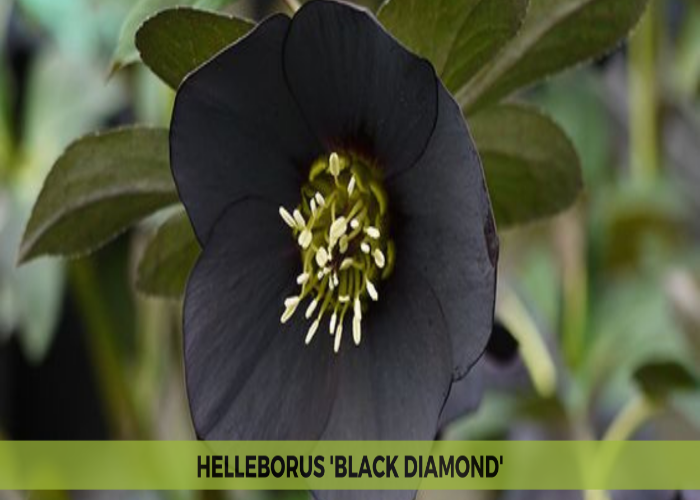
| Common Name | Black Diamond Hellebore |
| Botanical Name | Helleborus ‘Black Diamond’ |
| Plant Type | Evergreen perennial |
| Hardiness Zone | USDA zones 4-9 |
| Light Requirements | Partial shade to full shade |
| Soil Type | Moist, well-drained |
Helleborus ‘Black Diamond’, a hybrid hellebore with striking deep burgundy-black flowers, is popular. This hardy plant thrives in moist, well-drained soil. From January to April, it blooms at 30-45 cm. Woodland gardens, borders, and containers benefit from ‘Black Diamond’. Hellebores are poisonous, so plant them where pets and children can’t reach them.
4. Helleborus ‘Dark and Handsome’
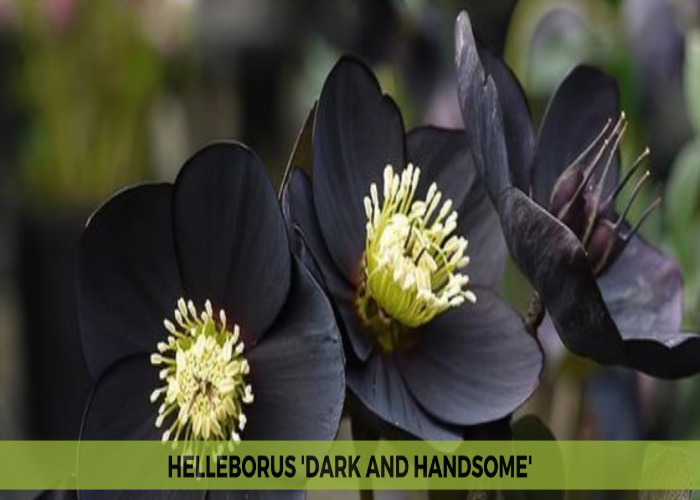
| Common Name | Dark and Handsome Lenten Rose |
| Botanical Name | Helleborus ‘Dark and Handsome’ |
| Soil Type | Well-draining, moist soil |
| Soil pH | Acidic to neutral |
| Watering | Regular watering is necessary |
| Foliage | Dark green and glossy |
| Maintenance | Low-maintenance plant |
| USDA Hardiness Zone | 4-9 |
Helleborus ‘Dark and Handsome’ is a popular hybrid hellebore with dark, rich flowers. This hardy plant prefers moist, well-drained soil. From January to April, it blooms at 30-45 cm. ‘Dark and Handsome’ is ideal for woodland gardens, borders, and containers. Hellebores are toxic if ingested, so avoid planting them near children and pets.
5. Helleborus ‘Double Ellen Purple’
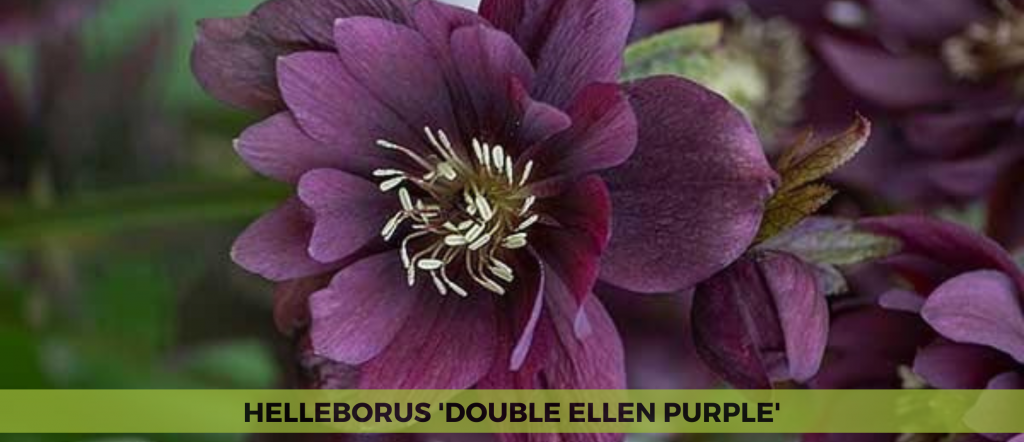
| Common Name | Double Ellen Purple Hellebore |
| Scientific Name | Helleborus ‘Double Ellen Purple’ |
| Foliage | Glossy, dark green, leathery |
| Soil Requirements | Well-draining, humus-rich soil |
| Hardiness Zones | 4-9 |
| Maintenance | Low |
| Uses | Shade gardens, woodland gardens, mixed borders |
Helleborus ‘Double Ellen Purple’ is a popular hybrid hellebore with vibrant double purple flowers. This hardy plant prefers moist, well-drained soil. From January to April, it blooms at 30-45 cm. ‘Double Ellen Purple’ is ideal for woodland gardens, borders, and containers in shady areas. Hellebores are poisonous if ingested, so plant them where children and pets can’t reach them.
6. Ashwood Garden Hybrids
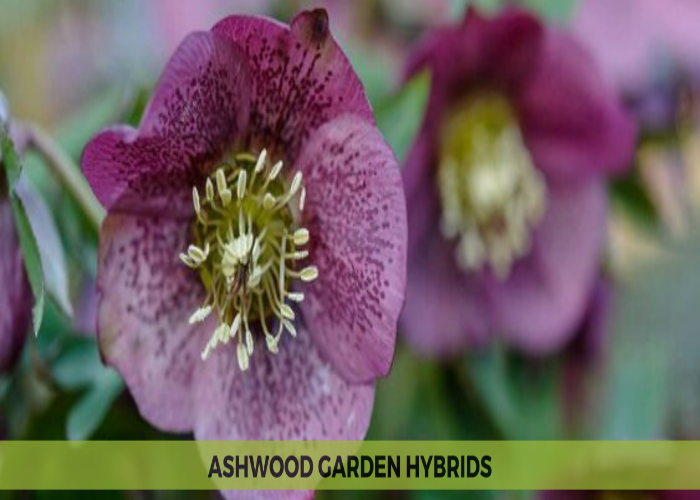
| Plant Type | Hybrid Hellebores |
| Flower Shape | Cup-shaped, nodding |
| Blooming Season | Late winter to early spring |
| Foliage | Deeply lobed, leathery leaves that are evergreen |
| Soil Type | Moist, well-drained soil with organic matter |
| USDA Hardiness | Zones 4-9 |
| Maintenance Level | Low |
Known for their colourful flowers and intricate markings on their petals, Ashwood Garden Hybrid hellebores are a series of hellebores with unique and beautiful blooms. Hardy and adaptable, they can thrive in a variety of growing conditions, from full sun to partial shade. In gardeners’ efforts to enhance their outdoor spaces with colour and elegance, Ashwood Garden Hybrids are popular choices.
7. Helleborus ‘Grape Galaxy’
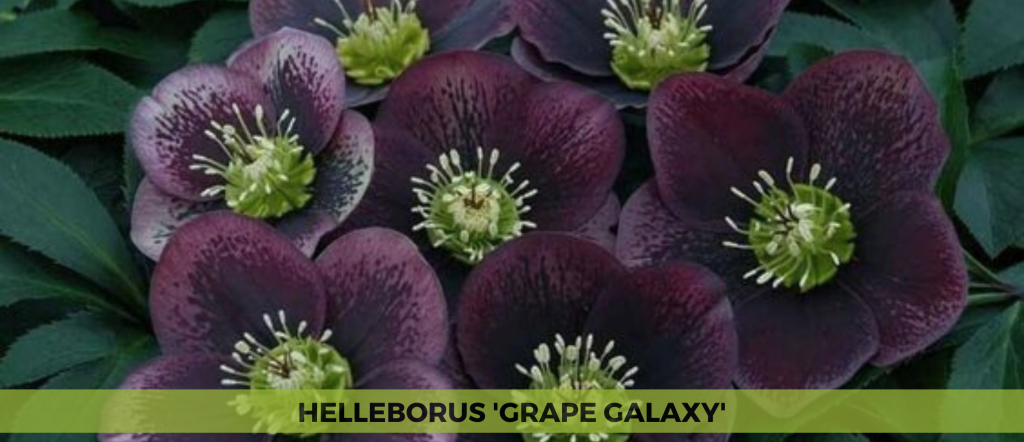
| Common Name | Grape Galaxy Lenten Rose |
| Botanical Name | Helleborus ‘Grape Galaxy’ |
| Foliage | Deep green, leathery, evergreen leaves |
| Height | 12-18 inches (30-45 cm) |
| Spread | 18-24 inches (45-60 cm) |
| Soil | Well-drained, humus-rich soil |
| Hardiness Zone | 4-9 |
| Maintenance | Low maintenance, deer resistant, drought tolerant |
Helleborus ‘Grape Galaxy’ is a hybrid hellebore plant with unique marbled, deep purple flowers that bloom from January to April. It can grow in a variety of soil types but prefers moist, well-drained soil in partially shaded areas. This plant is an excellent choice for woodland gardens, borders, and containers, particularly in shady areas. However, hellebores are toxic if ingested, so care should be taken when planting them in areas accessible to children and pets.
8. Helleborus ‘Harvington Double Purple’
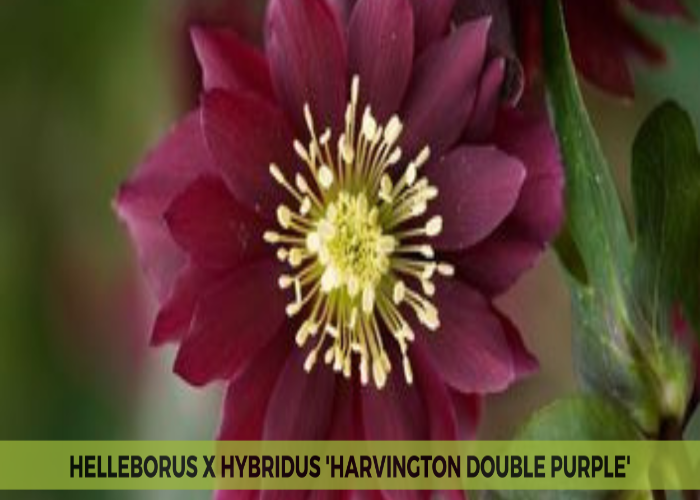
| Common Name | Harvington Double Purple Lenten Rose |
| Scientific Name | Helleborus ‘Harvington Double Purple’ |
| Plant Type | Perennial |
| Soil Type | Moist, well-drained, and rich in organic matter |
| Hardiness Zone | USDA zones 4-9 |
| Watering Needs | Regular watering does not allow the soil to dry out completely |
| Maintenance | Low maintenance, remove old leaves in the spring |
They are a beautiful addition to any garden in late winter and early spring. They can reach up to 30 cm in height and have double purple flowers. They are easy to care for and require minimal maintenance.
They are very hardy and can survive harsh winters, making them a great choice for those who live in colder climates. The flowers have a lovely, sweet scent that helps to attract pollinators such as bees and butterflies.
9. Helleborus ‘Midnight Ruffles’
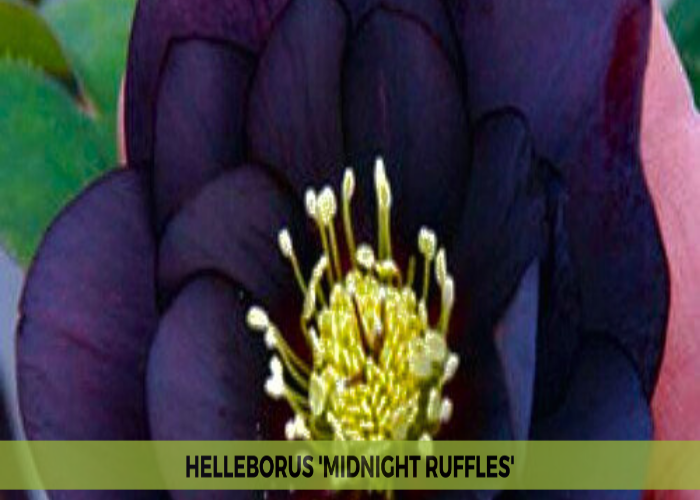
| Common name | Midnight Ruffles Hellebore |
| Botanical name | Helleborus ‘Midnight Ruffles’ |
| Plant type | Perennial |
| Soil | Well-drained, fertile soil |
| Water | Medium to moist soil |
| Zone | USDA hardiness zones 4-8 |
Helleborus ‘Midnight Ruffles’ is a flowering perennial plant with long-lasting and bright green evergreen foliage. It produces stunning deep purple, almost black flowers with ruffled petals. It is a low-maintenance plant, perfect for shady gardens.
It is a great choice for borders, rock gardens, and containers. It thrives in partial to full shade and is heat- and drought-tolerant. It is also very cold and hardy and can survive temperatures down to -30 °F.
10. Helleborus Orientalis ‘Hello Ruby’
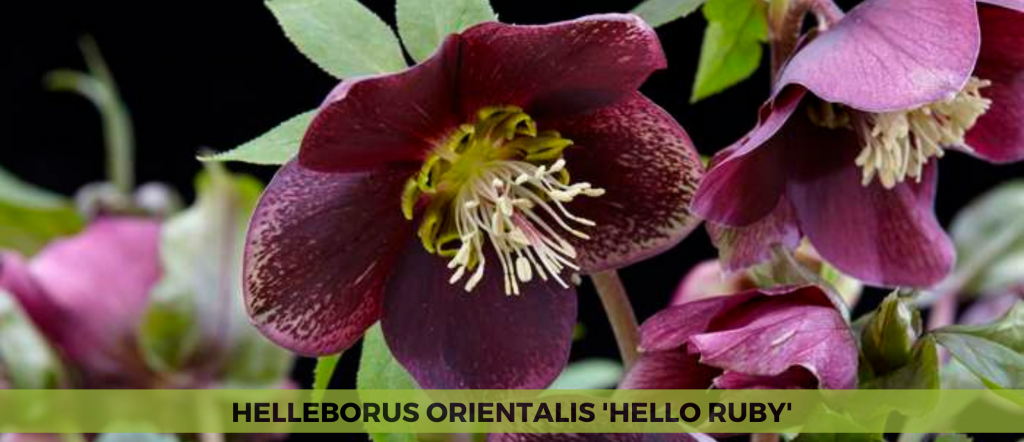
| Common Name | Hello Ruby Lenten Rose |
| Botanical Name | Helleborus orientalis ‘Hello Ruby’ |
| Soil Type | Moist, well-drained soil |
| USDA Hardiness | Zones 4-9 |
| Watering Needs | Regular, moderate watering |
| Maintenance Needs | Low |
| Special Features | Deer-resistant, early-season bloomer |
It is a perennial flowering plant in the Ranunculaceae family called Helleborus orientalis ‘Hello Ruby. Known as Lenten rose, it blooms in late winter to early spring. This ruby-red cultivar of Helleborus orientalis was selected for its vibrant flowers. This plant prefers partial shade and moist, well-drained soil and is drought-tolerant and deer-resistant. It grows to 12–18 inches tall and 12–24 inches wide.
‘Hello Ruby’ is known for its large, cup-shaped flowers, which typically measure around 3 inches across. The flowers are a deep ruby-red colour, with darker veins and centres. ‘Hello Ruby’ leaves are evergreen, leathery, and glossy dark green. The foliage is mildly toxic if consumed, so be careful when handling it.
11. Helleborus ‘Onyx Odyssey’
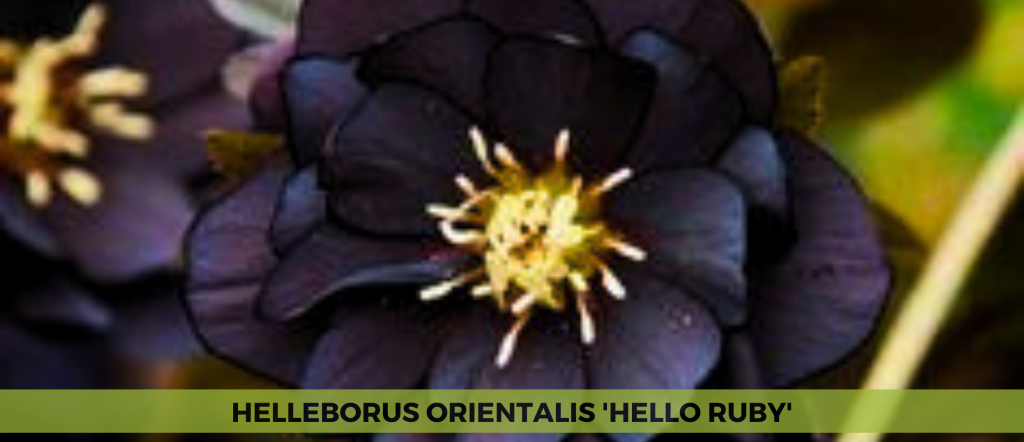
| Common Name | Onyx Odyssey Hellebore |
| Scientific Name | Helleborus × hybridus ‘Onyx Odyssey’ |
| Foliage Type | Evergreen |
| Soil | Well-draining, rich, moist soil |
| Watering Needs | Medium moisture |
| Maintenance | Low |
| USDA Hardiness Zones | 4-9 |
| Toxicity | Poisonous if ingested, may cause skin irritation if handled |
Helleborus ‘Onyx Odyssey’ is a long-blooming perennial with deep purple-black flowers that are easy to care for and highly resistant to pests and diseases. This low-growing plant reaches a height of about 12–18 inches, making it an ideal choice for planting in front of borders or as a ground cover in shady areas. It blooms from late winter to early spring, adding a splash of deep purple-black colour to your garden during the colder months. Overall, the ‘Onyx Odyssey’ is an excellent choice for creating a low-maintenance, visually stunning garden.
12. Helleborus x Hybridus ‘Harvington Double Purple’
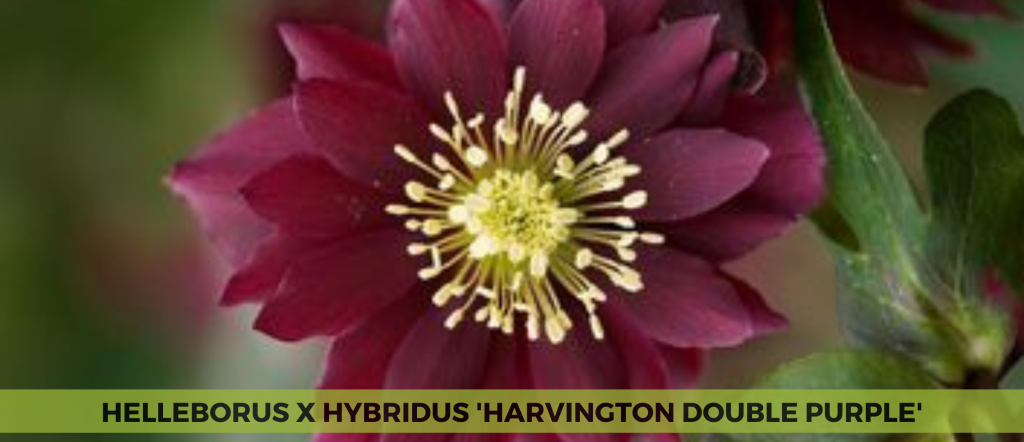
| Common Name | Lenten rose |
| Scientific Name | Helleborus x hybridus ‘Harvington Double Purple’ |
| Soil Type | Well-draining soil |
| Soil pH | Slightly acidic (6.0-7.0) |
| USDA Hardiness Zones | 4-9 |
| Watering Needs | Regular watering prefers moist soil |
| Fertilizer Needs | Fertilize in early spring with a balanced slow-release fertilizer |
The Ranunculaceae family plant Helleborus x hybridus ‘Harvington Double Purple’ is perennial in the Helleborus x hybridus genus. Helleborus hybridus, which combines several Helleborus species, is commonly known as Lenten rose.
During late winter and early spring, the plant produces large, double purple flowers, which measure about 3 inches across. The leaves are evergreen and leathery. Plants in the ‘Harvington Double Purple’ variety can grow to a height of 12–18 inches and spread 18–24 inches. They prefer partial shade and moist, well-drained soil. In addition to being drought-tolerant, this variety is also deer-resistant.
13. Helleborus ‘Picotee Princess’
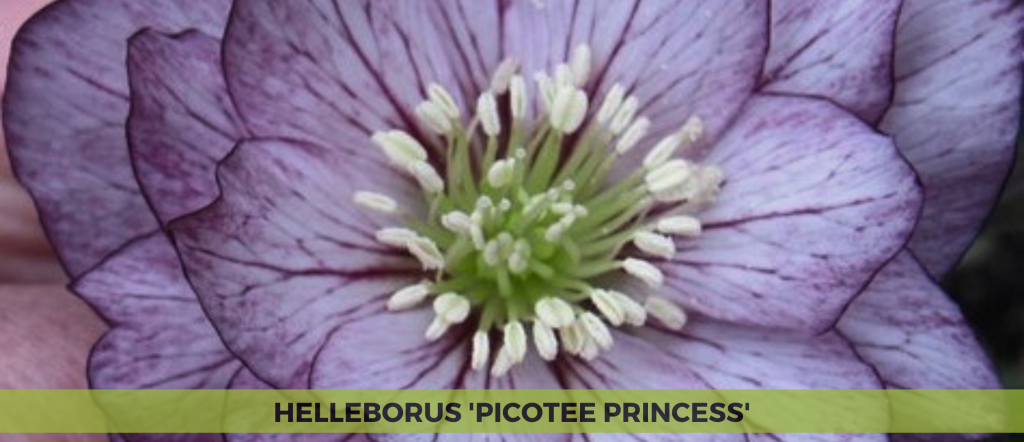
| Common Name | Picotee Princess Hellebore |
| Botanical Name | Helleborus ‘Picotee Princess’ |
| Soil Type | Moist, well-drained soil |
| Soil pH | Neutral to slightly alkaline (pH 6.5-7.5) |
| Flower Color | Pink or purple with white edges |
| USDA Hardiness Zone | 4-9 |
| Toxicity | All parts of the plant are toxic if ingested |
A striking hybrid hellebore, Helleborus ‘Picotee Princess’ produces showy white flowers with delicate pink edges, sometimes referred to as “picotee” or “edged.” Its attractive evergreen foliage blooms from January to April, bringing colour to your winter garden. The plant is tolerant of partial to full shade and prefers moist, well-drained soil. Additionally, it requires little maintenance and is deer resistant, making it an ideal choice for woodland gardens, borders, and containers. As with other hellebores, ‘Picotee Princess’ is toxic if ingested, so it should be planted in an area where children and pets cannot reach it.
14. Helleborus × Hybridus ‘Harvington Shades of The Night’
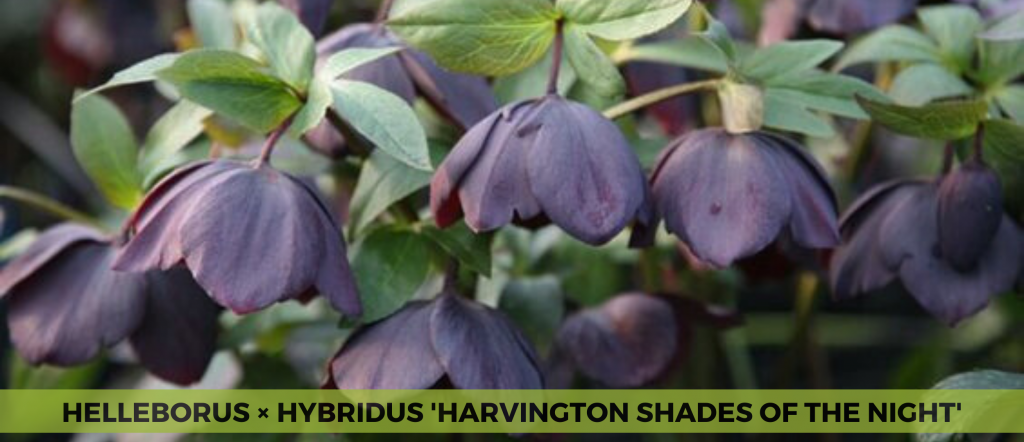
| Common Name | Harvington Shades of the Night Lenten rose |
| Botanical Name | Helleborus × hybridus ‘Harvington Shades of the Night’ |
| Foliage | Dark green, leathery, evergreen |
| Soil Requirements | Moist, well-drained |
| Hardiness Zones | 4-9 |
| Uses | Garden beds, borders, container gardens, cut flower arrangements |
Helleborus × hybridus ‘Harvington Shades of the Night’ is a cultivar of the hellebore plant, which is a perennial that produces attractive flowers and foliage. This variety is prized for its dark purple and black flowers, which bloom in late winter to early spring. The plant grows to a height of 30-45 cm and prefers partial to full shade and moist, well-drained soil. It is hardy and can withstand frost and cold temperatures. This low-maintenance plant is a favourite for shade and mixed gardens, thanks to its easy care and striking looks. Overall, Helleborus × hybridus ‘Harvington Shades of the Night’ is a beautiful and versatile plant that can add a touch of elegance to any garden.
15. Helleborus × Hybridus Party Dress Group

| Common Name | Hellebore |
| Botanical Name | Helleborus × hybridus Party Dress Group |
| Foliage Type | Evergreen |
| Foliage Color | Dark green |
| Soil Type | Well-drained |
| Hardiness Zones | 5-9 |
| Uses | Borders, containers, woodland gardens, shade gardens |
It is a group of ornamental hybrid hellebore plants with large, showy flowers that bloom late in the winter or early spring. The flowers are pink, red, purple, and white, often speckled or veined. This low-maintenance plant prefers partial shade and well-draining soil. Its large, leathery leaves are deeply lobed. Evergreen, leathery leaves are deeply lobed. This plant adds colour and interest to shaded gardens and landscapes.
Final Thoughts
Ultimately, purple and black hellebore varieties are unique and stunning additions to any landscape or garden. With their dark, moody colours and delicate, bell-shaped flowers, these plants bring a touch of mystery and elegance to even the dreariest of winter days. These hellebores are sure to impress, whether you’re an avid gardener or simply appreciate the beauty of nature.
So consider adding a few of these varieties to your garden this year. A little care and attention will reward you with a stunning display of winter blooms that will impress your guests. If you’re interested in growing purple and black hellebores, check with your local nursery or garden centre. Choose a location in your garden that gets partial shade and has well-drained soil.
It won’t be long before you’re enjoying these unique and stunning plants with a bit of patience and care.

